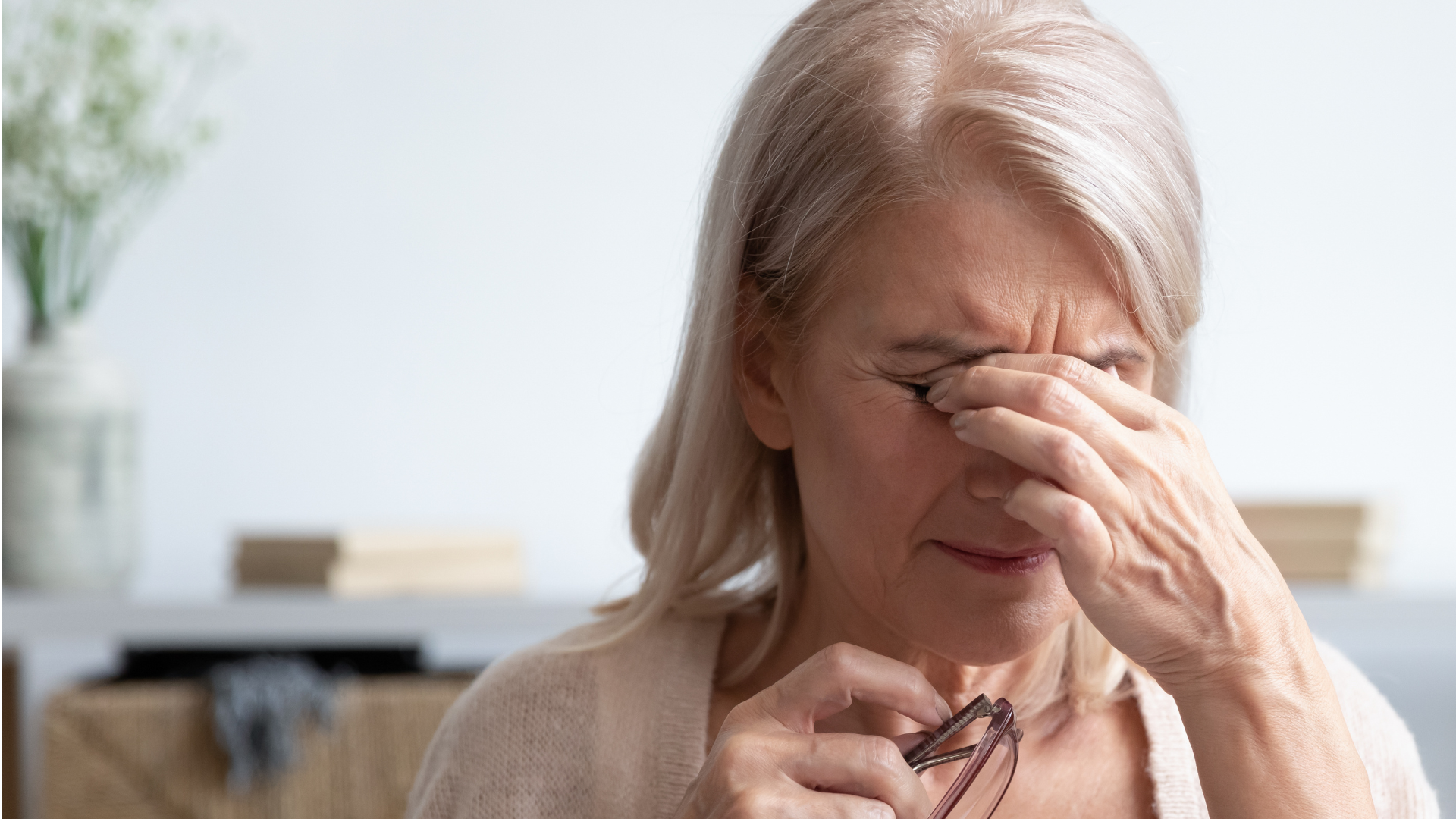
Managing dry eye and glaucoma
Itchy, uncomfortable and blurry vision can all be caused by dry eye, often experienced by people living with glaucoma. Read on for tips on reducing these irritating symptoms.
In 2022, the Royal National Institute of Blind People (RNIB) estimated that more than 700,000 people were living with glaucoma in the UK. Of those, around 50% to 60% are also thought to be experiencing some symptoms of dry eye disease. This can make everyday tasks more tiring and difficult for people living with glaucoma.
To manage these two conditions effectively, it’s important to get professional advice on your symptoms and support in finding the right treatment.
How are glaucoma and dry eye connected?
One reason for the correlation is that the risk of developing glaucoma and dry eye syndrome both increases with age.
Dry eye syndrome is a condition whereby the tears are unable to lubricate and sustain the front surface of the eye. Dry eyes are a result of reduced tear production or increased tear evaporation and tear maintenance is reliant on healthy and open glands within the eye lid and along the eyelash line.
In a healthy eye, naturally produced aqueous fluid drains into the venous system via a spongy tissue called the trabecular meshwork. In many cases of glaucoma there is increased resistance within this tissue which results in raised intraocular pressure within the eye. The first-line treatment for glaucoma is eye drops to lower the intraocular pressure. Many of these eye drops contain preservatives, which can disturb both the tear film and corneal surface, thereby exacerbating dry eye symptoms. As a result, it’s not uncommon for people with glaucoma to experience symptoms of dry eye.
What causes dry eye?
Dry eye is caused when one or both eyes can’t produce tears or naturally protective oils effectively. This means there is not enough moisture in the eyes, leaving them unlubricated and dry. In some cases, the eyes can become too watery as the brain tries to offset the lack of moisture. In others, the surface of the eyes can become damaged by dryness.
The specific causes of dry eye can range from medical conditions to environmental surroundings, including:
Over time, the ingredients in glaucoma eye drops can also lead to the development of dry eye. Therefore, it’s important to get professional advice as soon as the symptoms of dry eye appear so your medication can be checked.
What are the symptoms of dry eye?
The main symptom of dry eye is uncomfortable and irritated eyes that lack moisture and make everyday tasks difficult.
Specific symptoms can include:
How can eye care professionals help with dry eye?
Though mild dry eye can be managed effectively at home, it's important that people with glaucoma get professional advice from their consultant ophthalmologist or optometrist when symptoms appear. This will help your eye care team identify the causes of your dry eye symptoms and recommend appropriate treatments.
This may involve changing your glaucoma eye drops, contact lenses or other medications to stop symptoms from being exacerbated. Therefore, if your symptoms worsen when using any of these, it’s particularly important to note this down and tell your eye care professional.
As well as taking note of your specific symptoms, you should also talk to your optometrist or ophthalmologist about any activities that might affect your treatment plan. For example, if you like reading or being outdoors, then they can recommend ways to minimise symptoms while continuing to do what you love.
How can dry eye be treated?
To relieve your dry eye symptoms, an eye care professional may recommend a range of treatments, including:
It’s important to get the right advice as soon as symptoms appear so you can manage dry eye with glaucoma effectively. With the free OcuPlan service, you can ask a consultant for help or get rapid advice on managing your conditions whenever you need it. So by having the professional support of OcuPlan on hand, you can keep your eyes as comfortable and healthy as possible.
About OcuPlan
OcuPlan offers the gold standard of clinical care for patients with long-term eye conditions to help minimise the risk of sight loss.